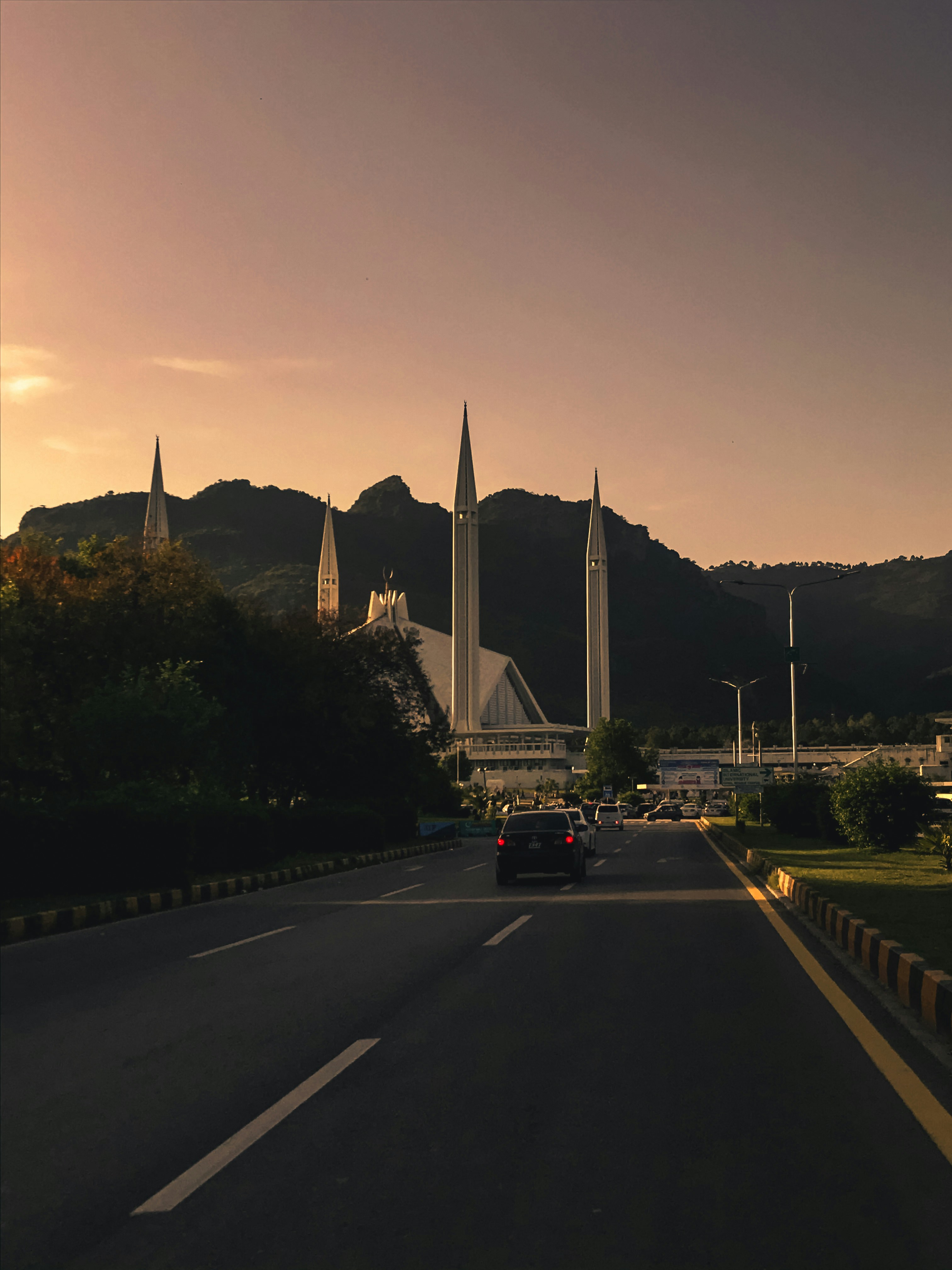A Gift of Friendship The mosque was named after King Faisal bin Abdulaziz of Saudi Arabia, who generously funded its construction as a symbol of brotherhood between Pakistan and Saudi Arabia. The idea of the mosque was proposed in 1966, and the project was completed in 1986, making it the largest mosque in Pakistan and one of the largest in the world at that time. 🏛️ Unique Architecture Unlike traditional domed mosques, Faisal Mosque stands out with its modern and unique design: Designed by Turkish architect Vedat Dalokay. Inspired by the tent of a desert Bedouin, symbolizing simplicity and spirituality. Lacks a central dome, but its sloping roof and sharp lines give it a futuristic look. Surrounded by four tall minarets, each 260 feet high, inspired by Turkish architecture. This blend of Islamic tradition with modern design makes it one of the most photographed mosques in the world. 📏 Size and Capacity Covers an area of 54,000 square feet. Can accommodate over 100,000 worshippers (inside and in the surrounding courtyard). Its grand prayer hall, spacious courtyard, and wide verandas make it ideal for large congregations, especially on Eid and Friday prayers. 🌄 Scenic Location The mosque’s location is as breathtaking as its design: Positioned at the base of the Margalla Hills, giving it a serene backdrop. Visible from different parts of Islamabad, making it a symbol of the city. At night, when illuminated, it creates a mesmerizing view that adds to the capital’s skyline. 🙏 Religious and Cultural Importance It serves as the national mosque of Pakistan. A hub for Friday sermons, Taraweeh prayers, and Eid congregations. Tourists from across the globe visit, not only for its spirituality but also for its architectural beauty. The mosque also houses the Islamic Research Centre, a library, lecture halls, and a museum. ✨ Symbol of Pakistan Faisal Mosque is more than just a mosque—it is a symbol of unity, modernity, and faith. For Pakistanis, it stands as a reminder of their Islamic heritage, and for visitors, it showcases the harmony between religion and contemporary architecture.
The Iconic Faisal Mosque: A Symbol of Faith and Architecture

Comments (1)
Please sign in to
add comments.

good